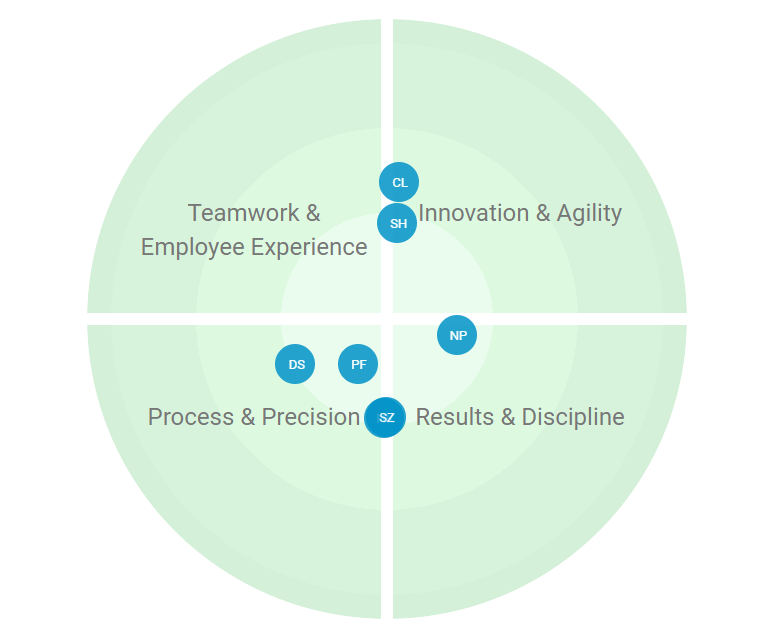Sales and marketing are two sides of the same coin. Imagine either team operating without the other in an organization—it wouldn’t get very far. So alignment between sales and marketing is critical to success.
Sales is a typical touchpoint for all customers considering a new product or service. Without a team of outgoing, driven salespeople reaching for the phone, how do you get customers to realize the value of your offering?
Marketing gets the word out about your product or service. It’s the marketers of the world that spread the message of the organization, attract interested parties, and send them down the hallway to sales.
Yet too often, sales and marketing can feel like two separate business segments. Maybe they sit at different ends of the office, or they sit in on separate meetings. But even if sales and marketing have different day-to-day goals, they share a unified vision: Gaining customers for the organization.
When looking to deliver on this promise, it’s important to ensure your sales and marketing teams are on the same page. Here are some pointers:
Align team goals.
What often causes friction between sales and marketing teams is something that creates friction in any organization: competing goals.
Think about two sports teams: What makes them opponents is different goals. It’s the same in your organization. When teams have different goals, they may start to oppose each other.
To bring better alignment to your sales and marketing teams, take a look at their metrics. In most organizations, marketing heads demand generation. The team is responsible for getting prospects in the door, and maybe nurturing them closer to the sale.
But when it comes to actually turning those leads into customers, the onus falls entirely on sales. And if the leads aren’t good quality—if prospects aren’t converting to customers—the blame falls on sales, too.
With that in mind, it’s easy to see where friction comes into play.
You can reduce friction between the teams by aligning their goals. Consider making your marketing team responsible for lead to opportunity conversion rate. That way, if there aren’t many qualified leads, there’s an impetus to fix the problem—not cast blame on the sales team.
You might also consider including metrics for your sales team that involve supporting the marketing team in creating better-quality leads. For example, maybe you require your sales team to provide feedback on lead quality on a regular basis so the marketing strategy can be refined. Collecting and leveraging detailed customer data can really supercharge this process.

Understand team dynamics.
When looking to increase cohesion between the sales and marketing departments, it’s also important to understand the differences in how those teams operate.
Selling is no easy task—especially when it’s a stranger on the other side of the transaction. Sales reps face a lot of rejection throughout the day. While commissions ensure they are well compensated for their efforts, it’s a tough job. It makes sense, then, that sales consists largely of assertive individuals undaunted by failure.
Marketing is a different beast. Most of its operations are internal—not prospect-facing. Whereas salespeople work through people interactions, marketers may live in spreadsheets, email threads, or Adobe Photoshop. They may be outgoing; they may be more timid. Regardless, extraversion’s less of a factor here.
This is where team dynamics come into play.
Team scenario #1
The diagram below comes from the PI Team Work Styles tool. The chart contains four quadrants that tie back to four business strategies: Exploring, Cultivating, Stabilizing, and Producing.

The chart represents the behavioral patterns of those on the demand generation team at PI. This team is responsible for driving qualified leads. You’ll notice that the team is pretty evenly spread across four quadrants of strategy. This makes sense for the team, as demand generation requires a mix of team strategies—including innovative thinking and process-oriented reflection.
Team scenario #2
Now take a look at this chart:

This chart represents our sales team. Compared to the marketing team, our salespeople are far more unified behaviorally. Most sit squarely in Innovation & Agility, while others border Teamwork & Employee Experience or Results & Discipline. This makes sense for the department. A quadrant like Process & Precision isn’t as important as focusing on making a personal connection and closing deals.
But these differences in team dynamics can make it difficult to gain alignment between sales and marketing. Say demand generation asks sales to complete a spreadsheet to inform marketing tactics. The task may slip reps’ mind as they’re busy with their daily calls. Likewise, if sales calls for an impromptu meeting to brainstorm new strategies, it might throw marketing off guard.
Keep these communication preferences in mind when assessing the team dynamics of your sales and marketing teams. This will help build better lines of communication—and achieve greater camaraderie among peers.
Join 10,000 companies solving the most complex people problems with PI.
Hire the right people, inspire their best work, design dream teams, and sustain engagement for the long haul.
Foster a culture of teamwork.
Another source of conflict between sales and marketing comes from competing cultures.
Selling is often a solo endeavor. It’s also a competitive one. When month-end comes and deals are at stake, a little rivalry between sales reps can boost productivity.
The environment is quite different in marketing. There’s far less emphasis on monetary incentives and monthly quotas. Collaboration is encouraged—if not necessitated. And when one person falters, everyone does.
Individually, these cultures work well. But when it comes to improving sales and marketing cohesion, there needs to be some middle ground.
Find ways to establish a culture that encourages teamwork across departments. At PI, sales uses a rocketship model that places reps into teams of four. Rockets do compete with one another, but the sales process is far more collaborative. This makes for smoother communication between sales and marketing.
To further establish a team-centric environment, you can hire sales and marketing employees with culture fit in mind. Make an effort to hire the whole person—not just their experience. (Think the movie “Moneyball,” but applied to HR recruiting.)
In doing so, you increase the likelihood new hires will adapt to the current culture—and be engaged and loyal members of the team.
Schedule regular SMarketing meetings.
Too often, sales and marketing function in silos. Increase transparency and collaboration by bringing the teams together for regular meetings.
HubSpot Academy professor Kyle Jepson calls these gatherings “SMarketing” meetings—all with the mindset that sales and marketing should function together as one team.
The goal of a SMarketing meeting, according to Jepson, is to “come together to discuss problems and collaborate on solutions.” This collaboration can foster trust that ultimately allows the sales and marketing teams to work better together.
During this meeting, open up the lines of communication. Let people know it’s OK to disagree or share an unpopular opinion. This isn’t the time to be political—it’s a meeting of the minds so you can, together, better drive revenue growth. (Check out our blog posts on the Trust Triangle and psychological safety to learn more about encouraging healthy conflict.)

Devote dedicated staff to sales enablement.
Sales enablement is a crucial component of sales development. It’s also tragically understaffed.
It often falls on marketing to provide sales with materials to help them close deals. These can be product one-pagers, content pieces, or messages to share on social media.
Unfortunately, bandwidth is limited. Between content marketing and lead generation, it can be hard for marketers to set time aside to prepare enablement resources. This can lead to feelings that sales isn’t getting the support it needs.
In these cases, consider making sales enablement its own position. By having talent dedicated to the role, you ensure the sales funnel is kept top of mind. You also show that the organization values alignment between sales and marketing. This can do wonders for morale, while generating goodwill between team members.
Every good change initiative requires a champion. By putting someone at the head of sales enablement, you can ensure a smoother marketing and sales process for all involved.
Join 10,000 companies solving the most complex people problems with PI.
Hire the right people, inspire their best work, design dream teams, and sustain engagement for the long haul.
Improved cohesion makes for smoother sailing.
There are other factors that can impact sales and marketing cohesion. Career progression is important—i.e., making sure everyone has an opportunity above them. This can help foster appreciation for where employees have been. It’ll also motivate them to keep pressing forward.
Open communication channels is another. By using tools like Slack, sales can keep marketing up to date on new sales strategies, and vice-versa. (If you need inspiration, one of PI’s channels is named #salesluvsmarketing.)
In keeping sales and marketing tight-knit, you pave the way for better alignment in the organization from all departments.


